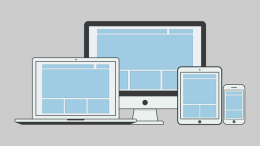Building products is hard. Building hardware products and taking them to market is nearly impossible. In the past three years of growing Wearable World, I’ve worked with more than 100 hardware entrepreneurs, and together we’ve stumbled through a dragon’s den of challenges unique to the hardware business.
As sensors and microprocessors have become cheaper and smaller, connected-device startups have been cropping up left and right, triggering a mad rush to get products to market. Entrepreneurs feel the pressure to get out in front of competition and retain more equity, so they turn to quick sources of cash like crowdfunding, then often struggle to produce a prototype that passes muster when it gets to manufacturing.
In light of this, I feel compelled to take what we’ve learned and add a bit of structure to the mayhem of bringing a hardware product to market. Along with my Wearable World team and a world-class partner, Jabil, we’ve created a framework that wearable and Internet of Things entrepreneurs can follow to avoid common pitfalls and streamline their go-to-market process, and we’re holding a two-day conference on October 13 and 14 to help you learn about it.
Get tickets now: The e2e Conference, Oct. 13-14
We are calling this framework as well as the conference “e2e,” for “end to end.” It’s the design-to-manufacturing process checklist for hardware products. So far we’ve come up with four major steps hardware entrepreneurs need to take to win at the hardware product game.
What You’ll Get At e2e
After creating this process and pressure-testing it with Jabil and the hardware startups going through our incubator, we’ve designed an event to share what we’ve learned with the greater hardware community.
The e2e Conference, ReadWrite’s and Wearable World’s gathering for hardware innovators, is our chance to facilitate a deep dive into the framework and how it can help IoT entrepreneurs. (In the interest of transparency, I should tell you we have a commercial relationship with Jabil, which is currently sponsoring ReadWrite and providing resources to Wearable World to help make the e2e Conference happen at Jabil’s Blue Sky Innovation Center in San Jose.)
Please join us for the event in person October 13 and 14 in the heart of Silicon Valley. And if you can’t make it—well, just keep reading ReadWrite, where we’re going to dive deeply into every aspect of the hardware innovation chain in the months to come.
Processed Ease
e2e is an integrated alternative to the common, disjointed approach in which entrepreneurs conduct each part of the product development process separately. They make the mistake of handing their product off to the next expert in line without effectively integrating best practices from each step.
Entrepreneurs and corporate innovators can avoid traps that make a product more difficult to manufacture and scale further down the line, by taking stock of as many challenges as possible from day one and continuing to revisit them and incorporate new information as the process unfolds. This helps them avoid expensive and time-consuming manufacturing delays, cost overruns, or embarrassing patches.
There are four steps involved in the e2e process of readying a product idea for successful full-scale production.
- Design For Manufacturing
- Value Engineering
- Prototyping
- Scaling
Design For Manufacturing
One of the biggest mistakes hardware startups make is ramping up production while they are still validating their design.
Many design houses worry that getting manufacturers involved in the initial design will confuse the process and stifle creativity. But if designers and manufacturers work together and provide feedback to each other throughout the design process, a stronger product will be created on a shorter timeline.
This approach helps entrepreneurs preempt problems encountered at the time of manufacture and scale. Rather than doing the CAD work and having a manufacturer point out issues raised by the design after the fact, this approach engages manufacturing experts from day one.
Say you have a molding issue. An industrial designer could devise a solution, but what if the solution affects your ability to source a key component from the manufacturer you had planned to use? Or what if that solution unexpectedly puts your bill of materials over budget?
It’s all about creating accountability from day one.
What to do: Engage manufacturing partners who have the talent and capabilities to provide valuable guidance in the design and prototyping process, and get them involved in design brainstorms. Some partners have research centers and advanced prototyping capabilities colocated in their manufacturing facilities. This way the manufacturer can build the first 500 units and address issues before attempting to scale.
Value Engineering
Once you start designing a product and considering manufacturing costs, very quickly the tradeoffs come. To balance the integrity of your design with a bill of materials that makes sense for your business goals you must get value engineers involved early in the process.
Value engineers look at use cases, anticipate costs, and offer solutions that balance efficiency with maintaining design integrity.
Hardware logistics decisions are largely driven by where you expect to sell your product. You should plan to scale it where it’s going to be sold, and to have designers who are familiar with the nuances of that culture. At scale, the effects of unexpected changes can add a great deal of cost, so it’s important to use tools to track data on everything from the cost of oil to the potential effects of a tsunami in the region.
What to do: Take time early on to determine who your target customer is and the price they’re willing to pay. And don’t forget that the customer isn’t Target or Amazon—it is the consumer who will use the product on a day-to-day basis. Then, consider options for lean assembly, packaging, and logistics. This reduces the number of cycles you have to run through to get your product to market and lets you focus on the next generation sooner.
Prototyping
When creating a prototype you must ask, “What problem am I solving and why this solution?” Without considering user experience and the real-world needs of potential customers, you risk creating a product that no one really needs. Google Glass is a great example of an objectively good product in search of a problem.
Creating prototypes for connected devices has opened up a Pandora’s box of new obstacles.
The Internet of Things is taking us into uncharted manufacturing territory. We are putting electronic components on plastic, 3D printing, and using conductive adhesives instead of the hot soldering process of traditional manufacturing—just to name a few.
With these increased demands and ever-present time constraints, it’s key to have access to a prototyping facility where manufacturing engineers and supply chain experts help finalize designs, find the best vendors and choose components to turn around prototypes in a matter of two to three days—without cutting corners.
Technical complexity can cause delays that may risk your product’s market success, which is why it’s critical to consider scaling when making a prototype. Some features or parts might make sense at the low-production prototype phase, but will you have the funding in place to produce them at scale? Will the materials be available long-term from qualified suppliers, so you can avoid hiccups when you go into volume production?
What to do: Have a dedicated, specialized team to do human-factor development, because in the world of connected devices, user interface and user experience is crucial. Get to know the majority of your use cases and build a prototype that addresses them.
Scaling
Though scaling comes after you’ve designed and built your product, it’s crucial to have the demands of mass production in mind throughout design, value engineering, and prototype building. If you’re building a product for, say, the Korean market, where will you source the parts, and what will that mean for shipping costs and time?
Consider that the size of your product can create issues in scaling. For example, an antenna can become an issue at smaller sizes. Even a decision that seems innocuous like shrinking your device can add a lot of time, cost and effort in scaling and bringing the product to market.
What to do: Try to colocate front-end design and back-end production within a unified team, in one place, if possible. This will reduce turnaround time on bill of materials validation, and will enable you to test the product, perform value analysis and supply-chain optimization, and design production-volume tooling for quick and seamless transfer to the production facility.
From Dreams To Market
Entrepreneurs and startups can enter this process at various stages. While some have an idea and are looking to find funding, others may already have backers, whether they be venture-capital firms or crowdfunding.
In either case, it’s crucial to find partners who understand the needs and requirements of bringing an IoT product to market. While sites like Indiegogo give people a chance to chase their product dreams, battle-tested partners, including the right investors, and a proven process give entrepreneurs a higher probability of turning these dreams into reality.
Crowdfunding proves a market for early adopters, but the money raised goes towards getting your initial orders out. How will you have the funds for a much larger, second run?
It’s absolutely critical to work with investors who are familiar with what it takes to source components, build a supply chain, control the costs of your bill of materials, and scale. This way you’re more likely to get the necessary time and funding to get it right, rather than rushing into ill-informed product decisions that produce a downward spiral of delays and disappointed customers.
The right partners, paired with a disciplined go-to-market process, not only help startups create the very best design, prototyping, manufacturing, and supply chain plans, but they can also lead them to the best investors.
While today’s hardware startups are born of inspiration and grit, they thrive on proven methods and carefully chosen partnerships. To learn more about where to seek advice and expertise on bringing a hardware product to market the right way, join us at the e2e Conference, October 13 and 14 at Jabil’s Blue Sky Innovation Center. Get your tickets now!
Photo by Todd Quackenbush

















